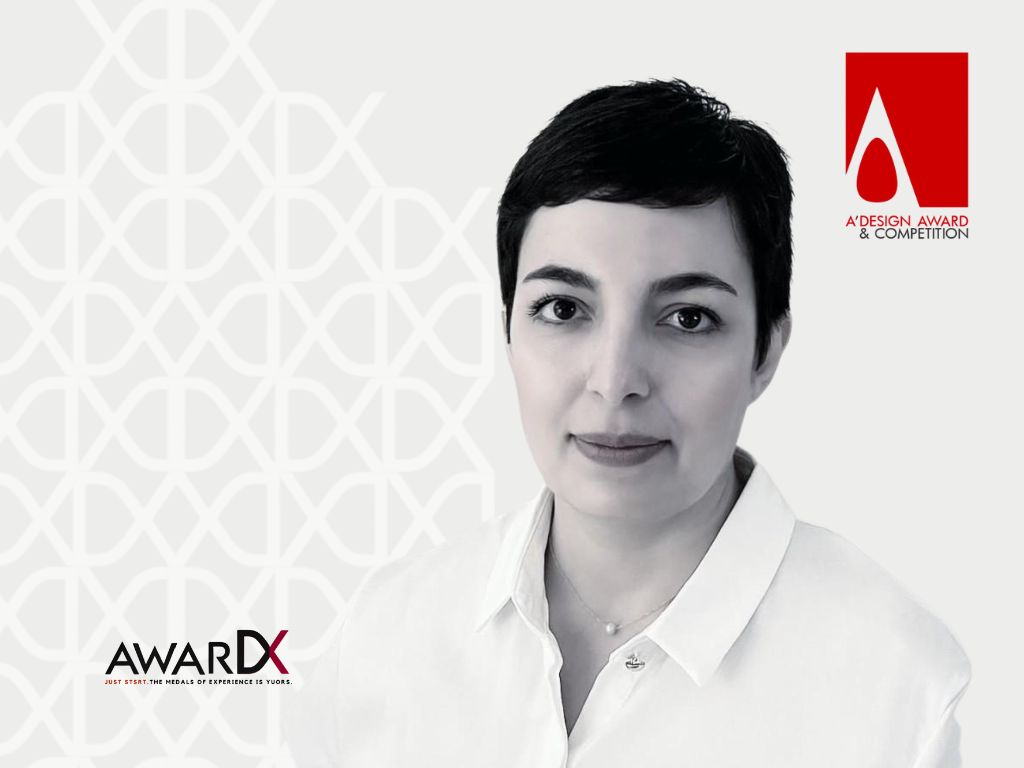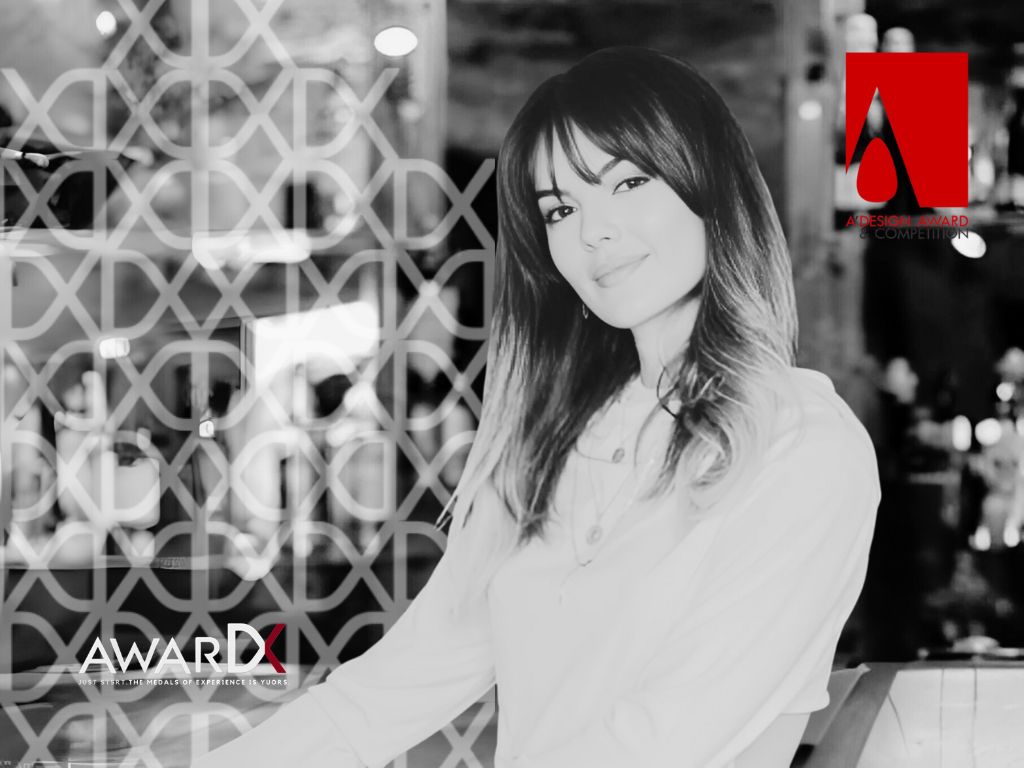Fabio Novembre — the designer and a quick product snapshot
Fabio Novembre is an Italian designer and architect known for playful, anthropomorphic furniture that blends sculpture, narrative and everyday function. Nemo is one of his most iconic works: a monobloc armchair shaped like a stylised human face that the sitter inhabits from the inside. The chair was introduced around Milan Design Week (Salone del Mobile) in 2010 and has since become a recurring piece in Driade’s collection, offered in multiple finishes and adaptations.

Why Nemo matters — a chair that becomes a character
Nemo works because it does more than provide seating: it stages an encounter. The chair reads as a face, mask or small shelter — a surreal object that simultaneously conceals and reveals the person within. That duality (intimacy + spectacle) is central to Novembre’s practice: he designs objects that provoke a story while remaining functional. As a monobloc polyethylene armchair, Nemo is lightweight, weather-tolerant in some versions, and visually arresting in any context — indoor lounge, outdoor terrace, gallery or public installation.
Designer mindset — myth, body and a theatrical approach
Novembre’s creative frame often starts with the human figure and a cultural reference: masks, classical faces, and the idea of shelter. For Nemo he distilled those references into a single formal move — hollowing a face into an inhabitable volume — that produces both archetypal resonance (think Greco-Roman sculpture) and immediate usability. The mental model is theatrical: furniture as stage-prop and personifier. Practically, that meant balancing expressiveness with ergonomics so the object reads as art without becoming unusable.
From idea to form — the development path
The Nemo process typically followed a clear set of steps: initial sketches and clay/foam maquettes to lock silhouette and scale; full-size mockups to validate how a human body sits within the “mask”; choice of manufacturing method to produce a single-piece shell; and final finishing options for market variants. Early physical models were essential: they confirmed that the hollowed volume would be comfortable and that sightlines, ingress/egress and acoustic feel worked in reality rather than only on paper.
Materials and manufacture — rotational moulding and practical choices
Nemo is produced as a rotationally moulded monobloc in polyethylene — a choice driven by practicality and expressive intent. Rotational moulding enables a single, seamless shell with the crisp facial contours Novembre designed, while keeping production costs and weight down and allowing outdoor-friendly finishes. Over time Driade expanded colourways and finish options (matte, lacquered, metallic mixes and custom “skin tone” runs) to broaden appeal and respond to cultural conversations around inclusivity and surface tone.
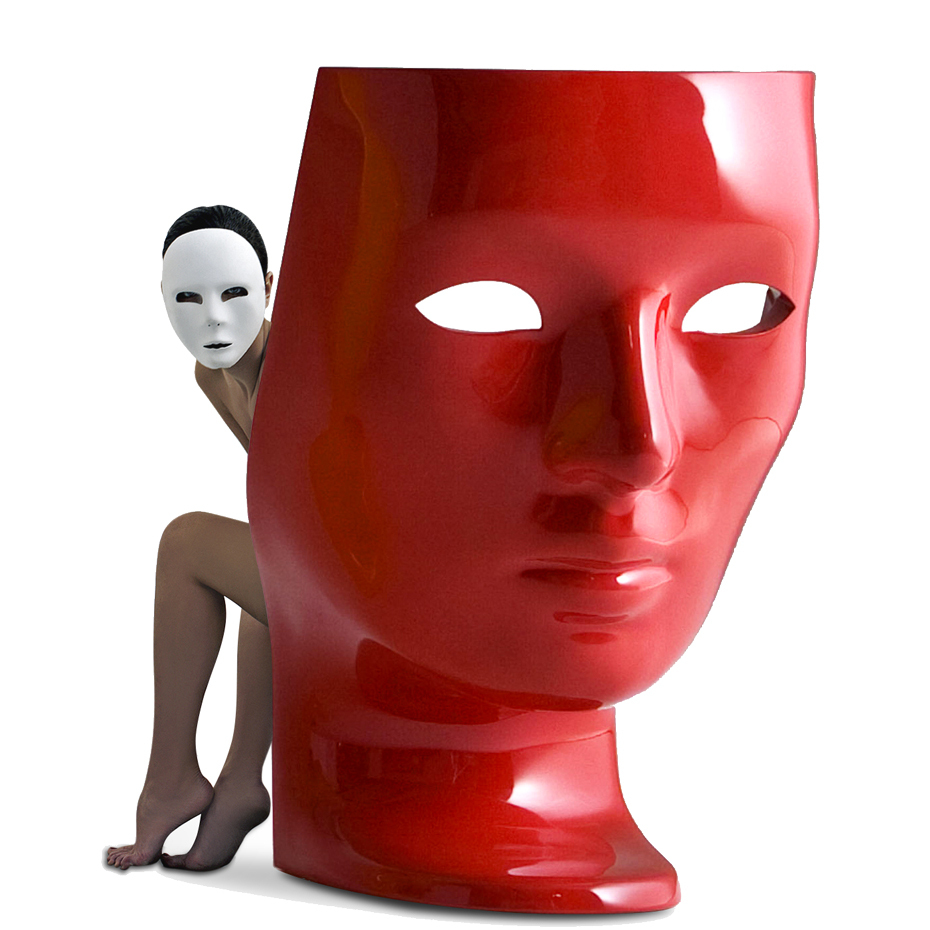
Prototyping, testing and comfort tuning
Turning a sculptural mask into a usable armchair required iterative physical testing. Designers tested internal clearances, seat depth and back curvature with full-scale models and live sit-tests. The goal was to keep the iconic silhouette while ensuring ergonomic comfort for a range of body sizes. For swivel editions, engineers validated bearing systems and seat anchoring; for outdoor editions, material additives and drainage/UV stabilization were tested. Each production variant required its own validation loop to preserve both image and function.
Finishes, customization and product family thinking
After the initial launch, Nemo evolved into a family: fixed monoblocs, swivel versions (indoor-only) and a “Skin Tone” customization program that expanded color ranges and surface effects. Driade’s approach allowed retailers and specifiers to select finishes that fit hospitality, residential or public installations. The product family strategy extended Nemo’s lifecycle and made it adaptable to editorial, theatrical and branded environments.
Why manufacturers chose this route — production advantages
Rotational moulding offers a durable, one-piece solution that avoids seams and post-assembly joinery — ideal for a sculptural object like Nemo. For Driade and licensees, the process reduced assembly steps and minimized points of failure, simplifying logistics for both small-batch and larger runs. The material choice also lowered weight compared with solid sculptural alternatives, making shipping and installation more manageable for galleries and retailers.
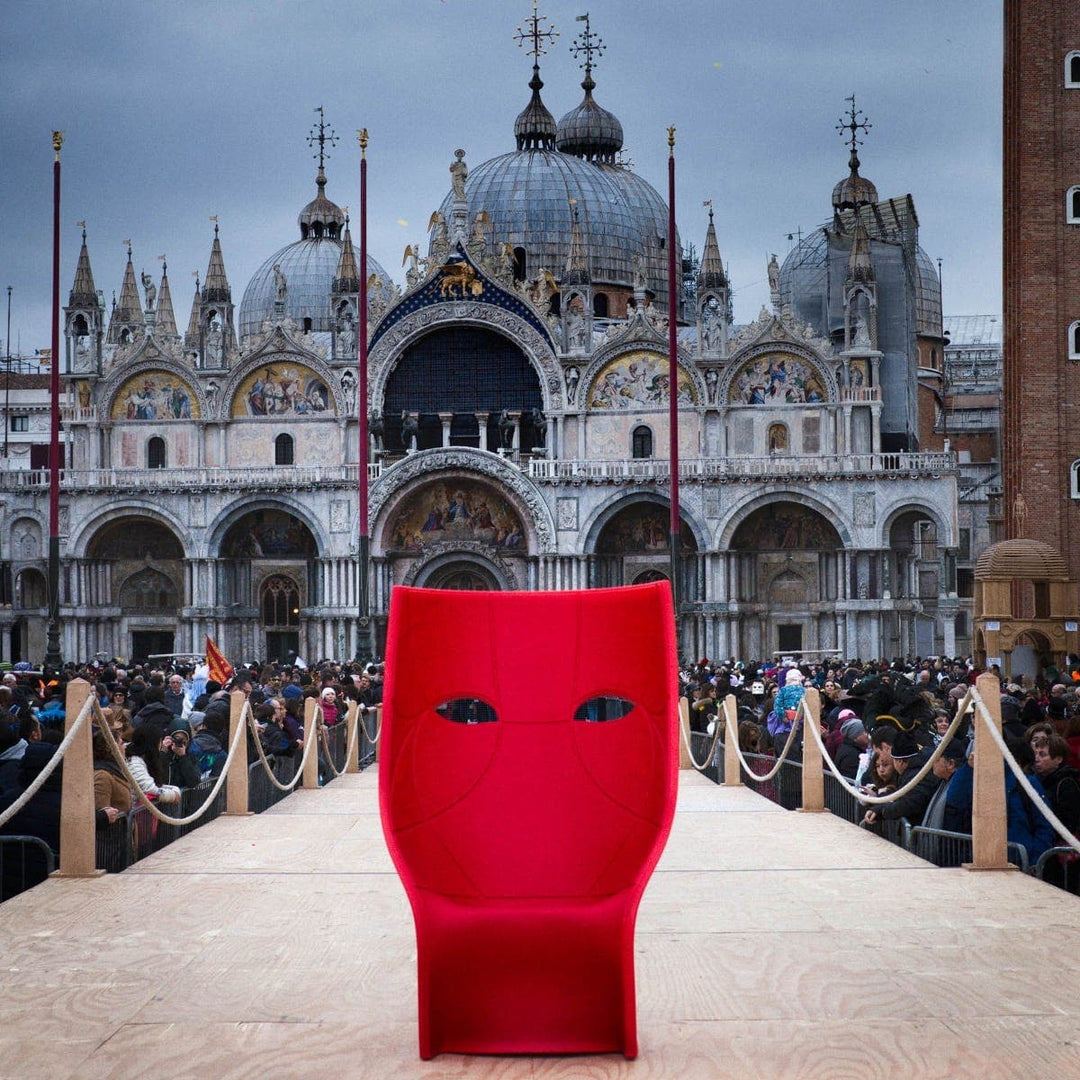
Cultural impact and curatorial life
Nemo quickly became more than a product: it’s an image that circulates in design press, installations and exhibitions. Because the chair reads like a theatrical prop, it photographs exceptionally well and has been reused in exhibitions, thematic installations (for example, “Nemo, omni”) and in editorial spreads about design and identity. Its strong silhouette makes it a favored hero image for brand storytelling and for showrooms that want a statement piece.
Commercial positioning and specifier notes
Nemo sells as a designer statement piece: for homeowners it’s a collectible object; for hospitality and retail designers it’s a zonal anchor that communicates a distinctive brand tone; for museums and galleries it’s an object of collectible design. Important spec notes: confirm indoor vs outdoor finish, check swivel vs fixed model availability, verify lead times for custom colours, and ensure floor load and access clearances for large installations.

Sustainability and lifecycle considerations
Polyethylene rotational moulding is durable and long-lasting, but designers and specifiers should weigh end-of-life plans: consider take-back, recycling streams, or upcycling programs for decommissioned units. Choosing finishes that are repairable and avoiding brittle additives extends useful life. For collectors, longevity and ease of cleaning are selling points; for public programs, UV-stable compounds and abrasion-resistant finishes matter most.
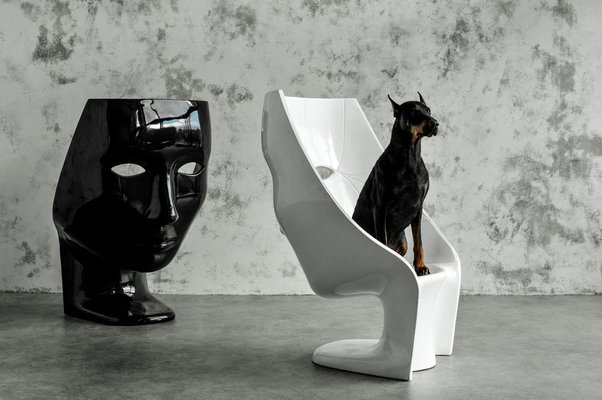
Design lessons from Nemo — for studios and students
- Start with a strong, human-centred narrative — a simple emotional anchor (mask, face) can guide form decisions.
- Prototype physically at scale early — silhouette and comfort reveal different truths when a human body interacts with the object.
- Choose manufacturing methods that serve the form — materials and processes should enable the expression, not fight it.
- Evolve as a family — variants, finishes and production-friendly editions broaden commercial life without diluting the core idea.
More information:
https://www.novembre.it/nemo-2/
https://www.driade.com/en/product/nemo-miniatura/
https://www.designboom.com/design/fabio-novembre-nemo/
https://designitaly.com/products/armchair-nemo-basic-colours-fabio-novembre-for-driade


